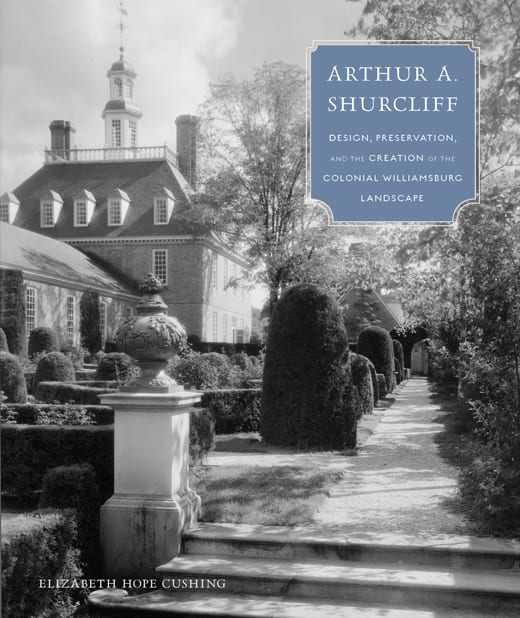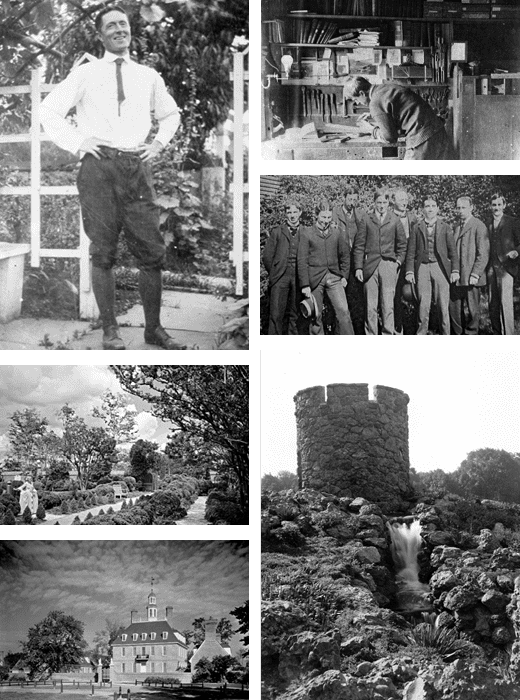IT’S HERE: ARTHUR A. SHURCLIFF AND THE CREATION OF THE COLONIAL WILLIAMSBURG LANDSCAPE
LALH and the University of Massachusetts Press are pleased to announce the publication of Elizabeth Hope Cushing’s richly illustrated biography of landscape architect and planner Arthur Asahel Shurcliff (1870–1957). Cushing’s authoritative new book illuminates how Shurcliff’s early years in Boston, his training, his early design and planning work, and his experience creating an Arts and Crafts style summer compound on Boston’s North Shore led to one of the most important examples of the American Colonial Revival landscape—Colonial Williamsburg. Cushing’s book is the product of years of detailed research based in part on previously inaccessible records. An outstanding scholar of the work of Frederick Law Olmsted and his firm, Cushing has brought Shurcliff to life as one of the most fascinating landscape architects and preservationists of his time.
Order your copy here.

Shurcliff worked in the office of Frederick Law Olmsted in Brookline, Massachusetts, for more than seven years before establishing a regional practice. An idiosyncratic and brilliant designer, Shurcliff prepared plans for towns surrounding Boston and for several industrial communities. He designed recreational spaces in and around Boston, including significant aspects of the Franklin Park Zoo and the Charles River Esplanade. In 1928, Shurcliff began what became Colonial Williamsburg, his largest and most significant contribution to American landscape architecture.
